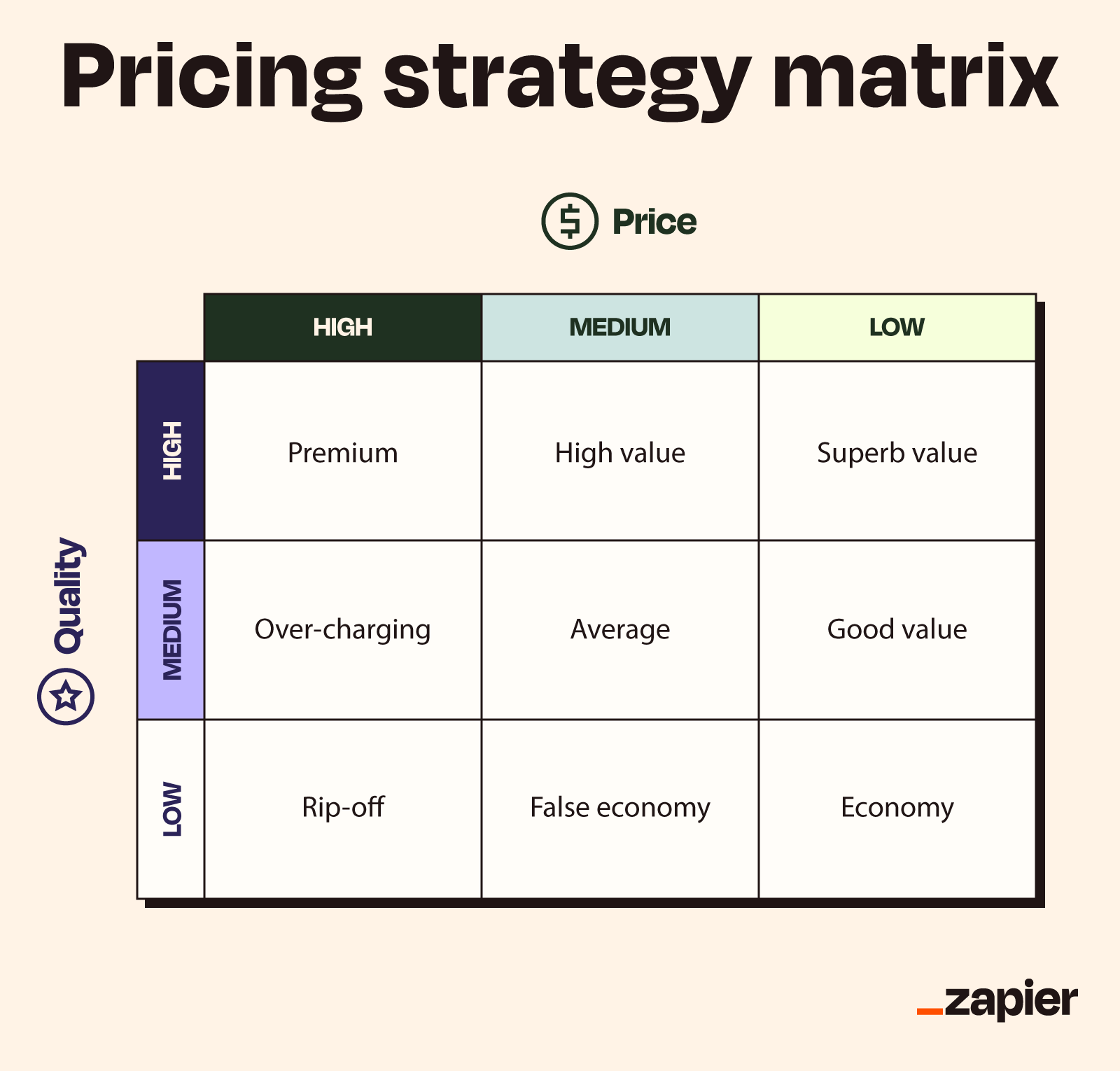Ingenious Pricing Strategy Strategies for Today's Digital Economic situation
Ingenious Pricing Strategy Strategies for Today's Digital Economic situation
Blog Article

Master Effective Rates Strategies to Optimize Revenue
In the ever-evolving landscape of commerce, understanding reliable prices techniques is crucial for businesses intending to optimize profit. A nuanced understanding of prices psychology can dramatically influence consumer actions and buying decisions.
Recognizing Prices Psychology
Recognizing rates psychology is vital for organizations intending to maximize their prices approaches. This field examines exactly how consumers regard prices and exactly how these assumptions affect their buying choices. Trick principles in pricing psychology include the anchoring impact, where the preliminary rate presented works as a referral point for customers, and the idea of rate sensitivity, which differs among various client segments.
Furthermore, businesses can leverage the concept of regarded value, where the viewed advantages of a product and services can validate a greater price factor. Premium prices can develop a mood of exclusivity, bring in customers that connect higher costs with exceptional high quality. On the other hand, psychological rates, such as establishing a price at $9.99 rather than $10, can considerably impact consumer behavior by making prices show up much more eye-catching.
Moreover, deficiency and necessity can boost the viewed value of items, triggering quicker buying choices. Recognizing these psychological triggers enables businesses to develop rates techniques that not only drive sales however also foster consumer commitment. Hence, grasping pricing psychology is essential for effective pricing strategy formulation, resulting in improved profitability and market positioning.
Executing Value-Based Pricing

Next, segment your customers based on their determination to pay and the value they perceive. By doing so, you can tailor offerings and pricing strategies to align with various segments.
Constantly keep an eye on market conditions and client comments to improve your pricing approach over time. By executing value-based rates, businesses can enhance productivity while fostering long-lasting consumer loyalty.
Discovering Dynamic Pricing Versions
In today's quickly transforming market landscape, vibrant pricing models have become a powerful approach for companies seeking to maximize profits and react to variations popular. These designs permit business to change their costs in real-time based on various variables such as customer habits, market trends, and stock levels. By leveraging information analytics and algorithms, companies can recognize optimum pricing factors that optimize sales while continuing to be competitive.
Dynamic rates can take numerous kinds, consisting of time-based rates, where costs vary based on time of day or period, and demand-based rates, which check this site out readjusts rates according to present customer need. This flexibility not only boosts productivity but additionally improves client satisfaction by offering rates that reflect real-time market conditions.
Implementing dynamic pricing requires a robust technological facilities and a deep understanding of consumer segments. Transparent interaction regarding pricing changes can assist reduce consumer dissatisfaction and foster count on, eventually leading to sustained success in a competitive industry.
Studying Rival Prices
Checking rival pricing is essential for companies aiming to preserve a competitive side in their particular markets. By evaluating rivals' rates methods, companies can identify market patterns, understand customer choices, and readjust their prices as necessary. This analysis involves event information on competitors' costs, advertising techniques, and product offerings to notify pricing choices.
To successfully assess rival rates, services ought to use numerous devices and strategies, such as cost tracking software application, market research study records, and consumer comments. This information can disclose just how competitors place their services and products, allowing businesses to separate their offerings or adopt similar strategies to remain appropriate.
Additionally, it is important to categorize competitors right into direct and indirect competitors. Straight competitors provide similar service or products, while indirect competitors may accomplish the exact same customer demand with different solutions. Comprehending the nuances in between these groups will certainly enable companies to tailor their rates techniques better.
Inevitably, ongoing rival pricing analysis is essential for making informed pricing decisions. It permits services to stay active in reaction to market changes, ensuring they can seize possibilities and reduce dangers connected with pricing methods.
Evaluating Prices Performance
Understanding their website how rival rates influences market dynamics brings about an all-natural emphasis on examining pricing performance within one's very own company. This assessment is important for determining areas of toughness and opportunities for improvement, eventually enhancing productivity.

Additionally, performing normal rates audits can disclose inconsistencies between expected and actual efficiency. This entails comparing pricing information across various sectors and networks to recognize variances and recognize fads. Incorporating customer feedback can give insights right into perceived worth versus actual pricing, ensuring placement with market assumptions.
Last but not least, leveraging data analytics tools can promote deeper insights into pricing performance, allowing organizations to make data-driven changes (Pricing Strategy). By constantly examining pricing efficiency, organizations can adjust to market description adjustments and maximize their techniques, ensuring continual earnings in a competitive landscape
Conclusion
By leveraging rates psychology, organizations can enhance viewed worth and tailor prices to diverse client sectors. The fostering of value-based and vibrant prices designs helps with real-time modifications based on need and customer willingness to pay.
Recognizing rates psychology is crucial for businesses aiming to maximize their pricing strategies. Understanding these emotional triggers allows organizations to create pricing strategies that not just drive sales however also foster client loyalty. Thus, grasping prices psychology is necessary for efficient prices technique formula, leading to improved earnings and market positioning.
By evaluating competitors' prices techniques, companies can determine market patterns, recognize customer preferences, and adjust their pricing appropriately. By leveraging rates psychology, organizations can boost regarded worth and tailor rates to diverse consumer segments.
Report this page